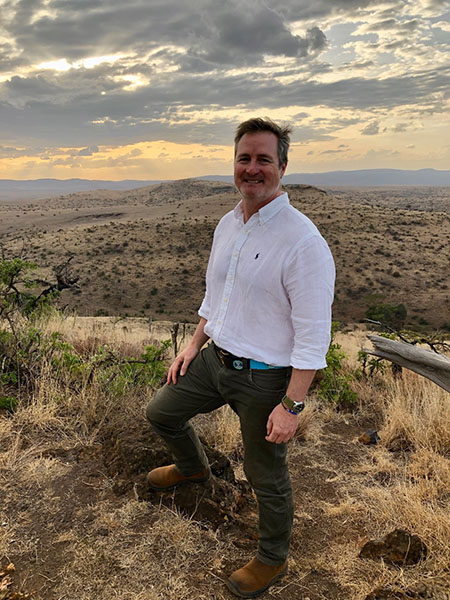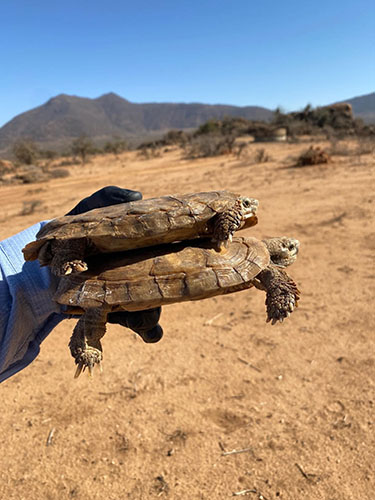
By Elaine Smith
Marc Dupuis-Desormeaux, a York biology course director, is working to save the pancake tortoise that is native to some areas of Africa and assessing what it will take to develop a community-based conservancy plan.

York biologist Marc Dupuis-Desormeaux is off to Kenya in October on a search for critically endangered pancake tortoises, an unusual creature that took a circuitous route to capturing his attention. But, then, nothing about Dupuis-Desormeaux’s path to studying turtles – including tortoises, who belong to the turtle family – has been ordinary.
Until about 20 years ago, Dupuis-Desormeaux was successfully working as an investment banker, but didn’t find it satisfying. He returned to York University to study wildlife conservation and environmental studies and earned his PhD, taking a particular interest in how fencing changed the behaviour of animals. He began studying prey trails and safe passage at Lewa Wildlife Conservancy in Kenya. When the Toronto Region Conservation Authority (TRCA) sought someone to design fences and underground passageways for its population of snakes, turtles and frogs, Dupuis-Desormeaux realized that he had the requisite skills and could be of assistance.
“Of course, I had to learn more about turtles,” he says.
Although Dupuis-Desormeaux’s primary research focused on predators in Kenya, at home in Canada, he became the TRCA’s turtle consultant. In 2019, the two interests merged.
“I was at a turtle conference taking a break and talking to a well-known turtle researcher,” Dupuis-Desormeaux said. “I told him that I did work in Kenya and he told me about the plight of the pancake tortoise. The terrain he described sounded like the area where I usually work, so I began asking around.”
Pancake tortoises are small reptiles, growing to only about 17.8 centimetres and weighing no more than 400 grams. They are native to Kenya, Tanzania and Zambia, but habitat destruction and poaching have taken a toll, and female tortoises generally lay only one egg annually, so increasing the population is challenging. The tortoises live in crevices in rock outcroppings call kopje. Given that such terrain abounds at Lewa, Dupuis-Desormeaux was hopeful that more of the population had escaped plunder.

His questions about pancake tortoises didn’t ring a bell with the Kenyan wildlife guides he knew, but an area lodge owner sent him a photo of something that looked like the small reptile. Immediately, working from Canada, Dupuis-Desormeaux organized his Kenyan colleagues to conduct a three-day survey to confirm the presence of the rare tortoises at Lewa; they found seven. Intrigued, he assembled a team to search the area for more evidence of the tortoises, but the pandemic struck and the trip didn’t take place.

In 2021, Dupuis-Desormeaux returned himself and worked with Kenyan wildlife experts to search the conservancy property; the group found 59 of the small creatures. He found more on a subsequent trip, also locating 40 of the reptiles at two smaller conservancies during single day surveys. Now, he’s returning to these smaller properties to determine how large their populations are.
Finding and counting these “critters” is work done on foot, given the rocky, hilly terrain. He and his colleagues systematically work their way up the hills, peering into cracks in the rock to look for pancake tortoises. It can be challenging, since the reptiles may share their space with lizards and snakes.
“I don’t want to come face-to-face with any spitting cobras,” Dupuis-Desormeaux said with a laugh, but noted, “This is very exciting; we discovered undocumented populations. Because rhinoceroses are protected at Lewa, there are armed guards to prevent poaching, which gives us a chance.
“The goal of this work is to end up with a community conservation plan, since the communities in the area share the land with their wildlife.”
Saving a species from extinction? It’s a conservationist’s dream, one that may soon become a reality for Dupuis-Desormeaux.
